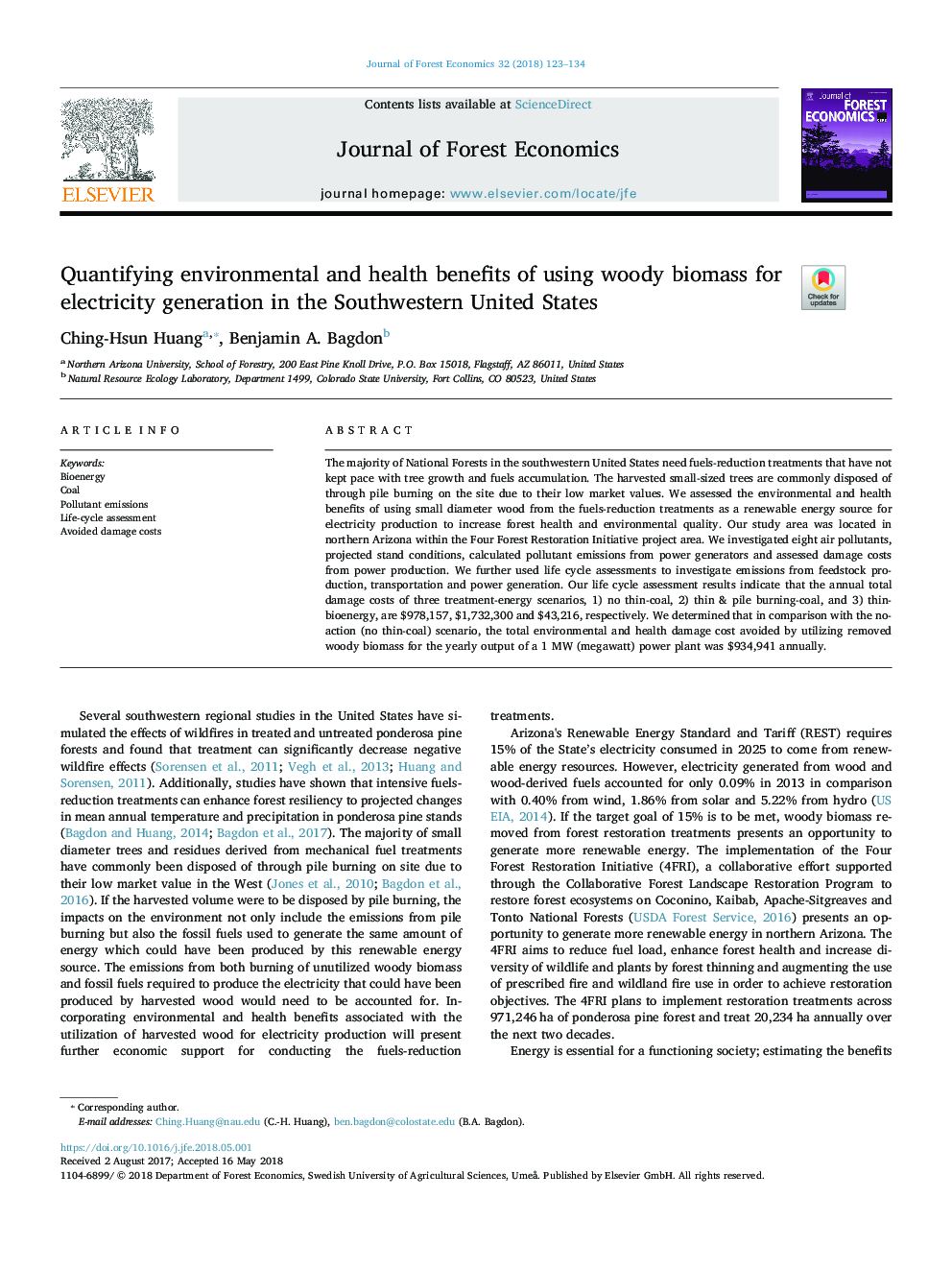| Article ID | Journal | Published Year | Pages | File Type |
|---|---|---|---|---|
| 9951710 | Journal of Forest Economics | 2018 | 12 Pages |
Abstract
The majority of National Forests in the southwestern United States need fuels-reduction treatments that have not kept pace with tree growth and fuels accumulation. The harvested small-sized trees are commonly disposed of through pile burning on the site due to their low market values. We assessed the environmental and health benefits of using small diameter wood from the fuels-reduction treatments as a renewable energy source for electricity production to increase forest health and environmental quality. Our study area was located in northern Arizona within the Four Forest Restoration Initiative project area. We investigated eight air pollutants, projected stand conditions, calculated pollutant emissions from power generators and assessed damage costs from power production. We further used life cycle assessments to investigate emissions from feedstock production, transportation and power generation. Our life cycle assessment results indicate that the annual total damage costs of three treatment-energy scenarios, 1) no thin-coal, 2) thin & pile burning-coal, and 3) thin-bioenergy, are $978,157, $1,732,300 and $43,216, respectively. We determined that in comparison with the no-action (no thin-coal) scenario, the total environmental and health damage cost avoided by utilizing removed woody biomass for the yearly output of a 1 MW (megawatt) power plant was $934,941 annually.
Related Topics
Life Sciences
Agricultural and Biological Sciences
Agronomy and Crop Science
Authors
Ching-Hsun Huang, Benjamin A. Bagdon,
